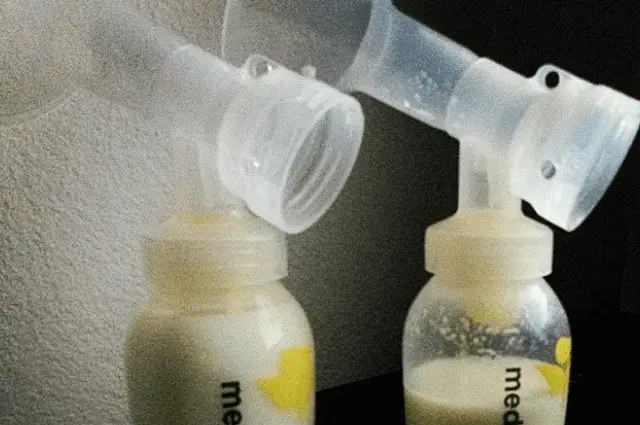Breast milk gives your baby the required nutrients for healthy development. But as a mother, you might need to pump and store your breast milk to be used at a later time due to various reasons. Medela pump is a breast pump made for mothers who pump breast milk for their babies. It can be distressing to find out that there is mold in your medela pump connector. Molds can get in a medela pump if you’re not completely washing or drying the pump connector. When moisture is left in the pump connector for a while, molds begin to grow and they can grow fast and affect all other pump parts.
Hey! By the way… any links on this page that lead to products on Amazon are affiliate links and I earn a commission if you make a purchase. Thanks in advance – I really appreciate it! .
What happens if a baby drinks milk from a moldy pump?
Molds are small organisms that can live anywhere and this includes a breast pump. Molds grow fast and can contaminate your breast pump. The Centre for Disease Control and Prevention released a report that foodborne infection can occur through contaminated equipment and breast pump parts are part of it. Your baby’s immune system is still growing and might not be able to fight against any bacteria.
The immune system might even launch a counter-attack that can weaken the immune system. This can either affect the baby’s development process or even lead to death. Cronobacter sakazakii is a bacteria that can exist in the environment, including a moldy breast pump part. This bacteria has been detected to put newborns and premature babies at extreme risk of meningitis, sepsis, and other severe infections. Therefore, it is important to keep breast pump parts clean for the safety of your baby because even with antibiotics treatments, a baby who drinks milk from a moldy breast pump part might not fully recover from the severe infection
How to clean mold in Medela pump connector
Molds can get in your breast pump parts, especially your connector, and it is important to know how to clean it before it contaminates the breast milk and gives your baby an infection. Below are a few guidelines on how to clean molds in Medela breast pump parts.
- Disconnect the connector from the pump and let the air blow through the tube. This would help remove some of the molds in the connector before you wash it.
- Remove possible contaminants by using mild soap and warm water: To clean out the mold in your breast pump connector, add mild soap and water in a clean wash basin before placing the contaminated pump connector in the basin. You can use a nipple brush to scrub your breast pump connector to ensure that possible contaminants are removed. It is important to put your breast pump connector in a washbasin and not in the sink to avoid the germs present in the sink contaminating the breast pump.
- Rinse the pump connector thoroughly with warm water: It is important to rinse the pump connector in a clean wash basin thoroughly for 10 to 15 seconds to completely remove the mold in the medela pump. You can also rinse the pump connector again under running water to be sure there are no molds left in the pump connector.
- Dry the breast pump connector in a clean area: After rinsing the pump connector, is important that you dry the pump connector in a clean area to avoid the pump connector being contaminated again.
- It is also important to sanitize the contaminated breast pump connector by boiling it for at least 5 minutes in a clean pot or using a microwave to steam the connector for a while. If the mold does not leave to your satisfaction you can replace the contaminated connector.
Tips to keep your pump parts clean
Your baby’s health is important. Therefore, it is important to know how to keep your pump part clean to prevent molds from growing on them. Below are a few tips to keep your pump parts clean.
- Ensure to keep everything that comes in contact with your breast pump parts clean. Wash your hands with soap and warm water before handling your breast pump part to ensure that your pump parts are clean. So, germs from your hands would not be transferred to your breast pump parts.
- Rinse out any milk residue found in pump parts with warm water. Milk residue that is not rinsed out properly can begin to grow molds. You can rinse the milk residue by placing the pump parts under running water for some seconds.
- Washing all pump parts after every single use keeps your pump parts clean and reduces the chances of mold growing on them. It is important to wash all pump parts in a clean wash basin meant for only washing pump parts to avoid more contaminations.
- Make sure up all pump parts are completely dry after washing. A wet pump part can breed molds and contaminate the breast milk your little one will take. Place pump parts on a clean and dry surface to make sure it is completely dry.
- It is essential to avoid using a cloth towel to dry your pump part because cloth towels can easily carry germs and this can be transferred to the pump parts.
- After washing your pump parts and ensuring that they are dry, store your pump parts in a secure and clean area that is meant only for the storage of your baby’s food item to prevent germs from contaminating your breast pump parts.
There can be mold in the Medela pump connector and can lead to your baby having a severe infection that can affect the development of your baby. It is important to clean your pump connector and your breast pump parts to ensure your baby stays healthy. These guidelines will help you know how to clean your pump connector when you notice molds in breast pump parts. Ensure to call your pediatrician immediately if you noticed that your little one has taken milk from a breast pump that has mold in it.

